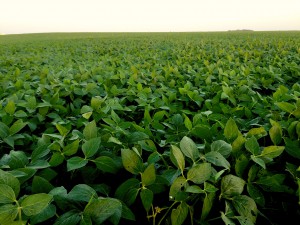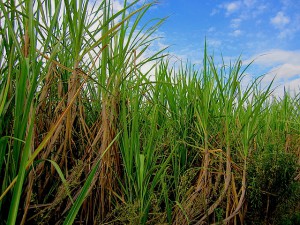Researchers at the University of Illinois have discovered a method to economically produce biodiesel from sugarcane as compared to the production of biodiesel from soybean oil. At the beginning of the research, which was designed to find a better way to make biodiesel than using food crops or land needed for food production, the team landed on sugarcane and sweet sorghum as viable options to achieve the goals. An article based on the research was published this month in BIOfpr.
According to lead project investigator Stephen P. Long, U of I crop scientist, the team altered sugarcane metabolism to convert sugars into lipids, or oils, which could been be used to produce biodiesel. While the natural makeup of sugarcane is typically only about 0.05 percent oil, within a year of starting the project, the team was able to boost oil production 20 times, to approximately 1 percent.
Today the so-called “oil-cane” plants are producing 12 percent oil with the team’s ultimate goal of achieving 20 percent oil. Oil cane has additional advantages that have been engineered by the tea iincluding increased cold tolerance and more efficient photosynthesis, which leads to greater biomass production and even more oil.
“If all of the energy that goes into producing sugar instead goes into oil, then you could get 17 to 20 barrels of oil per acre,” Long explains. Today an acre of soybean produces about one barrel or oil. “A crop like this could be producing biodiesel at a very competitive price, and could represent a perpetual source of oil and a very significant offset to greenhouse gas emissions, as well.”
In their analysis, the team looked at the land area, technology, and costs required for processing oil-cane biomass into biodiesel under a variety of oil production scenarios, from 2 percent oil in the plant to 20 percent. These numbers were compared with normal sugarcane, which can be used to produce ethanol, and soybean. An advantage of oil cane is that leftover sugars in the plant can be converted to ethanol, providing two fuel sources in one.
“Modern sugarcane mills in Brazil shared with us all of their information on energy inputs, costs, and machinery. Then we looked at the U.S. corn ethanol industry, and how they separated the corn oil. Everything we used is existing technology, so that gave us a lot of security on our estimates,” Long said.
The analysis demonstrated that oil cane with 20 percent oil in the stem, grown on under-utilized acres in the southeastern United States, could replace more than two-thirds of the country’s use of diesel and jet fuel. This represents a much greater proportion than could be supplied by soybean, found the study, even if the entire crop went to biodiesel production. In addition the study found oil cane could achieve this level of productivity on a fraction of the land area that would be needed for crops like soybean and canola, and it could do so on land considered unusable for food crop production.
What about the cost comparison? The research team said citing the current full production cost of biodiesel from soybean at $4.10 per gallon ($1.08 per liter) but using oil cane instead, the cost decreases to $3.30 per gallon for 2 percent oil cane and to $2.20 per gallon for 20 percent oil cane. The ethanol produced from 1-, 5- and 10 percent oil cane would add to the cost benefit. Long said that while this only represents a moderate cost savings, politicians and consumers will need to look at the bigger picture.
“We know from our past experience that it’s not going to last,” Long concluded. “We need to start building for a future when gas is no longer as low as $1.50 per gallon, and we need to avoid any future dependency on other countries for our oil. We are lucky to have the land resources to do this and, in doing so, to ensure that future generations have a supply of oil that is domestic and renewable.”



